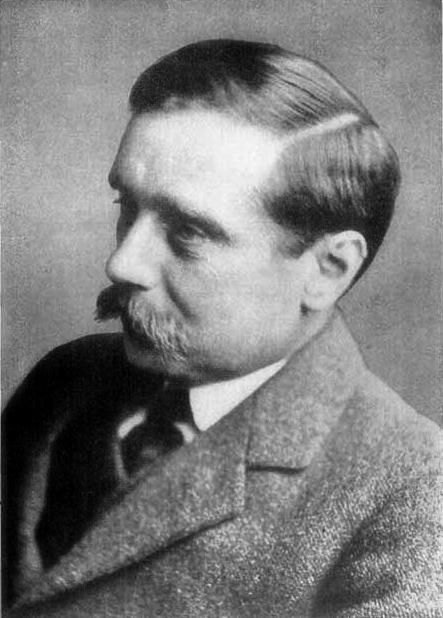“The Beautiful Suit” is a short story by the English author H. G. Wells (1866–1946), first published in Collier’s Weekly in April 1909 under the title “A Moonlight Fable”,[1] and subsequently included in The Country of the Blind and other StoriesCollection of 33 short stories by H. G. Wells, first published in 1911. (1911). The story is narrated by an unnamed third person, and the two protagonists are referred to only as “the little man” and his mother. The style of the telling of this “strange short piece” clearly owes much to the fairy tales of Hans Christian Andersen.[2]
Synopsis
The little man’s mother makes him a beautiful suit of green and gold, of indescribable delicacy and fineness. The buttons shine like stars, and so enthralled is the little man with his new apparel that he wants to wear it everywhere. But his mother says that he is to take great care of his new suit, and wear it only on “rare and great occasions”, as it is his wedding suit, and he will never have another one so fine. She does however sometimes allow the little man to wear it for church on Sundays, but only after tacking on protective guards to those areas prone to wear and tear such as the cuffs and elbows, and screwing tissue paper around the buttons.
“One strange night” the little man wakes up and sees the moonlight shining outside his bedroom window, but not a common moonlight. He decides that now is the time to wear his suit as it should be worn, without any of its protections. After dressing in his beautiful suit, he climbs out the window into the garden below. Moonshine is “tangled in the hedges”, and the darkness of the night is replaced by “warm, mysterious shadows”. In his “infinite gladness” he forces his way through the garden hedge, ignoring its thorns and brambles, and makes his way to the duck-pond, which seems to him like a “great bowl of silver moonshine “. After wading across the pond he comes to the “high road”, where he encounters a “great dim moth”, which circles closer and closer until “its velvet wings just brushed his lips”.
The following morning the little man is found dead at the bottom of the stone pit, his neck broken and his once beautiful suit bloody, foul and stained with the duckweed from the pond. But the expression on his face is one of “such happiness that, had you seen it, you would have understood indeed how that he had died happy, never knowing that cool and streaming silver for the duckweed in the pond”.
Commentary
Although it is never stated, it seems plausible that the “little man” is in reality a boy living with his mother; perhaps his final excursion in all his finery represents his escape from her control over his life. Wells may therefore be suggesting that it is better to live a short life and be free, than to grow old having never escaped from the constraints imposed by society.
The symbolism of the moth, the last living thing that the little man encounters, may also be significant. Both moths and butterflies have literary associations with death,[a]The Greek word psyche means “moth”, “butterfly” and “soul”.[2] as in Thomas Hardy’s The Return of the Native (1878), in which the moth is linked with fatal love. For the little man, the moth is the “agent of a death which is both ecstatic and base”.[3]
See also
- H. G. Wells bibliographyList of publications written by H. G. Wells during the more than fifty years of his literary career.
Notes
| a | The Greek word psyche means “moth”, “butterfly” and “soul”.[2] |
|---|
References
Bibliography
External links
- Full text of “The Beautiful Suit” at Project Gutenberg

